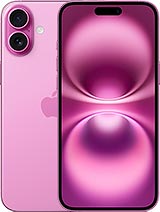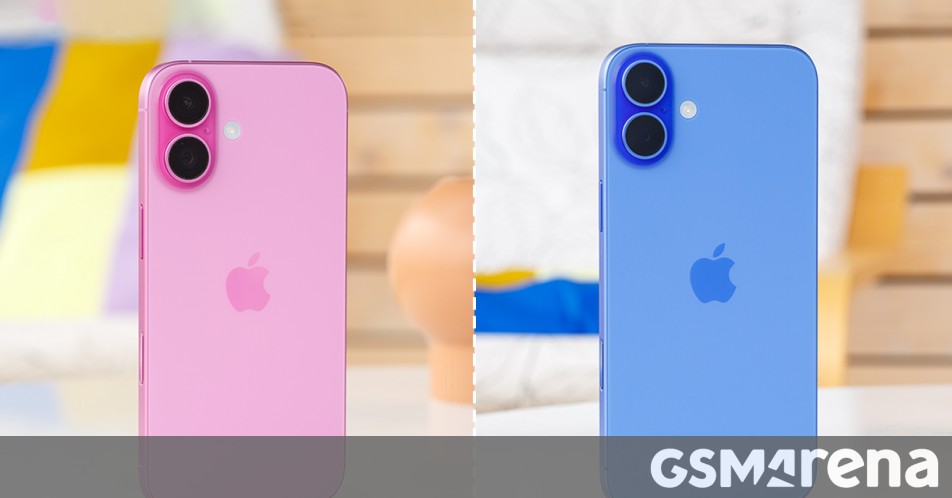So, are you looking for a shiny new iPhone? The iPhone 16 is certainly a very well-rounded device. Of course, the Pro model is even better, but unless you really need an extra camera or a higher refresh rate, you’re probably better off with one of the two vanilla models.
If there’s one thing Apple is great at (and it’s definitely more than one thing), it has to be consistency. So it’s no secret or surprise that there are almost no differences between the iPhone 16 Plus and the iPhone 16. The Plus is simply bigger, with a larger display and battery pack. Otherwise, the hardware and experience are the same.
So is the Apple iPhone 16 Plus good enough to warrant the price premium? Let’s find out.
table of contents:
First, you can compare the complete spec sheet or proceed directly with the editor’s rating. In the text below.
size comparison
Let’s first address the elephant in the room: size. The 16 Plus is significantly larger than the standard iPhone 16. The only dimension the two devices share is thickness, which is great. Otherwise, the Plus is taller and wider. That’s no surprise considering it has a 6.7-inch diagonal display compared to the iPhone 16’s 6.1-inch.

By today’s standards, I would actually call the Plus a more “mainstream” form factor. Large cell phones have been the norm for some time now. The Plus fits comfortably in your hand and is very comfortable to hold, even if it’s a bit slippery without a case.
The regular iPhone 16 is positioned as a “compact” phone. It’s easy to put in your pocket and very easy to handle with one hand. That being said, be sure to check both phones in person. I don’t think the iPhone 16 Plus will feel too big, but the vanilla iPhone 16 might feel a little too small. It’s only our 2 cents on this matter.
Display comparison
As mentioned earlier, the iPhone 16 Plus has a significantly larger display than the iPhone 16. Not necessarily big by modern standards, but definitely big. Technically, the Plus also has a higher display resolution. However, Apple doesn’t care too much about resolution and has always aimed for consistent pixel density across models. This is the case as both phones feature a very crisp 460 ppi.
Apple uses very premium panels even on its non-Pro devices. Both phones are nice and bright, and the brightness numbers are very similar. OLED technology means perfect blacks, high contrast, and punchy colors. Apple offers HDR10 and Dolby Vision support on both iPhones and has a very flexible HDR implementation, allowing you to play HDR video across the display as well as within a window.
The big problem with the display on non-Pro iPhones is the fact that the display is still 60Hz. Unfortunately, the only way around that is to buy the Pro model.
battery life
Apple took advantage of the extra internal space inside the iPhone 16 Plus to include a larger battery. To quote Cupertino’s needlessly specific numbers, the iPhone 16 Plus pack is 4674 mAh, while the regular iPhone 16 pack is 3561 mAh.
This is about a 30% difference in battery capacity and a very noticeable difference in battery life in favor of the iPhone 16 Plus. According to our proprietary testing mechanism, the 16 Plus gets around 3 hours of additional active usage score.
That being said, the vanilla iPhone 16 is still better in the battery department. It’s extremely durable for such a compact phone.
charging speed
Apple is surprisingly consistent when it comes to charging. Both the iPhone 16 and iPhone 16 Plus officially advertise a wired charging rate of approximately 50% power in 30 minutes, and both phones are able to comfortably exceed that speed, which is I’m happy. There are slight differences in the charging curves for both phones, but as expected, they end up fully charged in about the same total time.
Both phones also get the same charging features, including wired PD 2.0 charging, 25W wireless MagSafe, 15W wireless Qi2 charging, and 4.5W reverse wired charging.
speaker test
Cupertino engineers are masters when it comes to speaker tuning, and have given both the iPhone 16 Plus and iPhone 16 the same level of care and attention. Both phones feature a hybrid stereo speaker system with an amplified earpiece that acts as a second earpiece. channel.
Both phones are similarly tuned and achieved very good loudness scores in our tests. The Plus is just a little louder, probably because it has a little more room to work with, but the difference isn’t significant. In terms of quality, both phones are equally good.
performance
Apple made a two-generation chipset jump this year for non-Pro iPhones, from the A16 to the A18. This is a significant increase in power and performance. It’s also important to note that unlike last year, this year’s iPhone 16 models all come with 8GB of RAM (both non-Pro and Pro models).
Apple is pushing AI (which in this particular case means Apple Intelligence) in a big way. Perhaps the Cupertino engineers need additional RAM to run their local AI models more efficiently. The fact that this consideration is now reaching non-Pro iPhones is great, as it should also be useful for day-to-day use of the phone.
benchmark performance
Naturally, the iPhone 16 Plus and iPhone 16 use the same Apple A18 chip, so it makes sense that they would have the same peak burst performance. Benchmark scores represent exactly that situation.
That said, it’s probably worth noting that the iPhone 16 Plus handles thermal throttling a little better than the iPhone 16, probably due to its larger size. Performance degradation after long stress tests is slightly less. Still, the difference between the two is not that big, and real-world apps and games don’t stress the hardware in that way, so these kinds of points are more scientific than practical. This is the point.
Camera comparison
iPhone 16 Plus and iPhone 16 have exactly the same camera settings. Yet another point of consistency. The main 48MP camera is borrowed from the iPhone 15. It has a 1/1.56 inch size, 1.0μm individual pixels, sensor shift OIS, and is extremely powerful. In front of it is a fast f/1.6 lens.
I also borrowed some selfies from my iPhone 15. The 12MP shooter has already proven itself to be good and also comes with phase detection autofocus.
The real upgrade is the new ultra-wide camera. It’s still a 12MP unit. But this year, a faster lens with an f/2.2 aperture has arrived. Additionally, and perhaps best of all, the ultrawide has phase detection autofocus and can also be used as a macro camera for close-ups.
A word about something new camera control button. It’s a physical button that actually moves, but it also integrates a high-precision force sensor that allows for light press gestures, and a capacitive sensor that allows for touch and swipe interactions. This button is present on both the iPhone 16 Plus and iPhone 16 and enables the same functionality within the camera app, primarily quick gesture controls. Two-stage shutter functionality will be added in a future update.
image quality
We’re considering two phones with identical camera hardware, identical chipsets and ISPs, and identical processing. So the shots are the same. You can check the sample for yourself. iPhone 16 Plus and iPhone 16 capture excellent 12MP still images. There’s no question about that. The frame has a lot of detail and everything is clean and sharp. Dynamic range is excellent, especially shadows, which are nicely boosted and developed. The leaves and grass look very convincing.




Apple iPhone 16: Ultrawide, Main, 2x, Portrait




Apple iPhone 16 Plus: Ultrawide, Main, 2x, Portrait
Low-light performance is also similar between the two phones. Shocking, we know.



Apple iPhone 16: Ultrawide • Main • 2x



Apple iPhone 16 Plus: Ultrawide • Main • 2x
Autofocus is excellent on both phones’ selfie cameras. The quality is great.


Apple iPhone 16: Selfie


Apple iPhone 16 Plus: Selfie
video quality
Overall, iPhone 16 Plus and iPhone 16 live up to Apple’s reputation for industry-leading video capture. The main cameras on both phones output clean, sharp video with a wide dynamic range and clear details, even in the shadows.
Below are some frame captures from videos taken with two phones at each focal length. This makes it easier to compare them with each other.




Apple iPhone 16: Ultrawide, Main, 2x, Lowlight




Apple iPhone 16 Plus: Ultrawide, Main, 2x, Lowlight
verdict
Apple is nothing without consistency in its lineup. Want a compact phone without spending a lot of money? Buy the vanilla iPhone 16. Can you make it a little bigger?Of course, there’s also the iPhone 16 Plus. It’s the exact same phone, just bigger. Simple and straightforward.
Either way, you’ll be getting a great premium phone. Sure, we’d love to see non-Pro iPhones eventually come with higher refresh rates, making Apple’s telephoto camera look as cool as ever. Still, if you don’t need any of these, you can’t go wrong with the iPhone 16 Plus or iPhone 16.

- The display and battery are also larger.
- Chart-topping battery life.
To get the Apple iPhone 16 Plus:

- Compact form factor.
- We offer the same user experience at a lower price.
To get your Apple iPhone 16:


